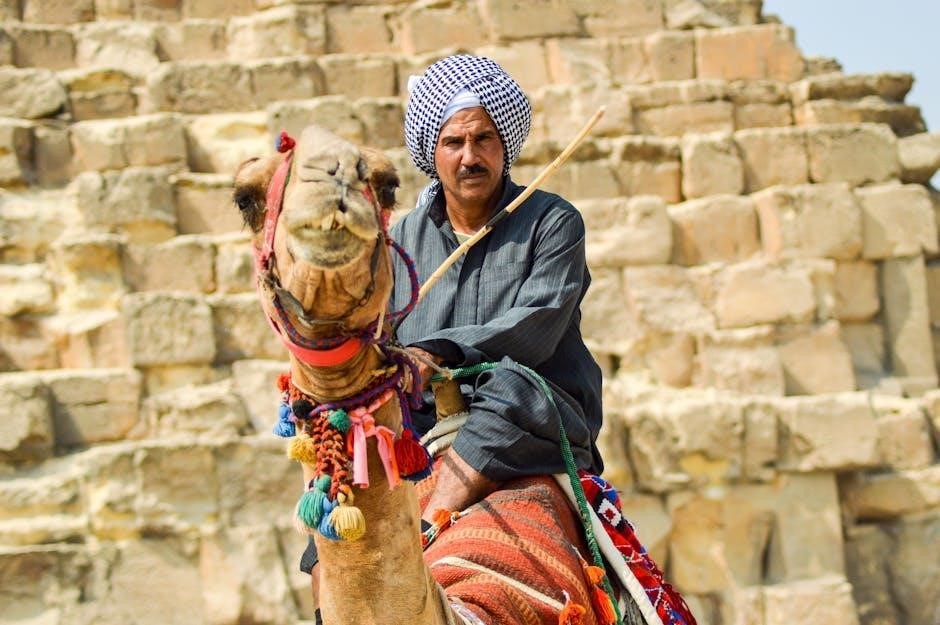Owl hooting is a fascinating form of communication, essential for territory marking, mating, and social interaction. Each species has unique vocalizations, offering insights into their behavior and ecological roles.
The Significance of Hooting in Owl Communication
Hooting is a vital form of communication for owls, serving multiple purposes such as territorial marking, attracting mates, and reinforcing pair bonds. Through unique vocalizations, owls convey important information about their identity, location, and intentions. Each species has distinct hooting patterns, allowing for identification and understanding of their behavior. Territorial hooting warns competitors to stay away, while mating calls help establish connections between males and females. The variations in pitch, tone, and rhythm also reflect factors like age, sex, and regional differences. This complex system of vocalization is essential for owls to navigate their social and ecological environments effectively, making hooting a cornerstone of their communication strategy.

Why Do Owls Hoot?

Owls primarily hoot to communicate, marking territories, attracting mates, and reinforcing social bonds, with each species having unique vocalizations tailored to specific purposes and contexts.

Territorial Marking and Defense
Owls use hooting as a primary method to mark and defend their territories. By vocalizing, they signal to other owls that a specific area is occupied and warn potential intruders to stay away. This behavior is particularly pronounced during breeding seasons, when males hoot frequently to establish and maintain boundaries. The hooting becomes more intense when defending nest sites or favored hunting grounds from competing owls. If a neighboring owl responds with its own hoot, the defending owl may escalate with aggressive calls or flights. This territorial communication ensures that owl populations remain dispersed, reducing competition for resources. The unique vocal patterns of each species also help in identifying the caller, ensuring that territorial messages are clear and effective in maintaining spatial order within owl communities.
Mating and Pair Bonding
Owl hooting plays a vital role in mating and strengthening pair bonds. Male owls often initiate hooting during courtship to attract females and establish a connection. This vocalization helps potential mates locate each other, especially in dense habitats. Breeding pairs may hoot together in duets, creating a harmonious exchange that reinforces their bond. The intensity of these calls often increases before and during the breeding season. Female owls may respond with higher-pitched or slightly varied hoots, allowing mates to recognize one another. This vocal interaction is crucial for synchronization and mutual recognition, ensuring a strong partnership during nesting and raising offspring. The unique hooting patterns of each species further facilitate mate selection, as individuals can identify compatible partners through their distinct vocalizations.

Communication with Other Owls

Owls use hooting as a primary means of communication, enabling them to convey crucial information to other owls. Hooting helps establish contact, particularly between mates or parents and their young. For instance, a female owl may use a softer hoot to communicate with her chicks, while males often hoot to maintain pair bonds or signal their presence. Additionally, hooting serves as a warning system to alert other owls of potential threats or intruders. Each species has distinct vocalizations, allowing owls to recognize one another. For example, the Barred Owl’s “Who cooks for you?” call is a common form of communication in its habitat. This vocal exchange is vital for maintaining social structure and ensuring coordination within owl communities, especially in dense or dark environments where visual cues are limited.
![]()
Different Types of Owl Hoots
Owl hoots vary, from the deep calls of Great Horned Owls to the screeching of Barn Owls and unique vocalizations of Flammulated and Long-eared Owls, each species offering distinct sounds.
The Classic Hoot: Great Horned Owl and Barred Owl

The Great Horned Owl’s hoot is a deep, resonant “hoo-h’ooh,” often heard up to five miles away, serving as a territorial marker and mating call. Barred Owls produce a distinctive “Who cooks for you?” call, common in eastern forests. Both species use these classic hoots to communicate, with females often having higher-pitched voices. These iconic sounds are vital for establishing territory and attracting mates, making them among the most recognizable owl vocalizations in the wild.
Screeching and Whistling: Barn Owl and Eastern Screech Owl
Barn Owls and Eastern Screech Owls produce distinct vocalizations that differ from the classic hoots of larger owl species. Barn Owls are known for their high-pitched, blood-curdling screeches, often described as eerie hissing or screaming sounds, used primarily for alarm or defense. In contrast, Eastern Screech Owls emit a high-pitched whistling call, often sounding like a horse’s whinny, which serves to maintain contact with mates or offspring. These vocalizations are more nasal and shrill compared to the deep, resonant hoots of larger owls. Both species rely on these unique sounds for communication, with regional variations in pitch and tone allowing for identification. Their calls are essential for navigating their environments and conveying messages to other owls in their vicinity.
Unique Vocalizations: Flammulated Owl and Long-eared Owl
The Flammulated Owl and Long-eared Owl exhibit remarkable vocal diversity, differing from other owl species. The Flammulated Owl produces a low, deep hoot, unusually resonant for its small size, often used during breeding seasons to attract mates. Its calls are typically a series of hollow, whistled notes that blend seamlessly into the night, making them challenging to locate. In contrast, the Long-eared Owl emits a haunting, drawn-out whistle, sometimes described as a low, chanting hoot. These vocalizations are primarily used for territorial marking and pair bonding. Both species’ unique calls serve as vital tools for communication in their respective habitats, showcasing the intricate vocal adaptations within the owl family. Their distinct sounds highlight the diversity of owl vocalizations, aiding in species identification for birders and researchers alike.

When Do Owls Hoot?
Owls primarily hoot at night, with peak vocalizations after sunset and before dawn. Some species, like Barred Owls, are also active during daylight hours, ensuring their presence is known.
Nocturnal Hooting: Nighttime Vocalizations
Owls are primarily nocturnal, and their hooting peaks after sunset, particularly in the first hour of darkness and just before dawn. Moonlit nights often amplify their vocalizations, as visibility aids communication. Species like the Great Horned Owl and Barred Owl are most active during these hours, producing deep, resonant calls that can carry over long distances. These nighttime vocalizations serve as territorial markers and mating signals, helping owls establish their presence and attract partners. The unique patterns and tones of their hoots allow for species identification, making nighttime listening a rewarding experience for bird enthusiasts. This behavior highlights owls’ adaptation to their nocturnal lifestyle, ensuring effective communication in the dark, while also providing insights into their ecological roles and social interactions. Their nighttime hooting is a cornerstone of their survival and mating strategies, making it a vital aspect of their biology and behavior.
Diurnal Hooting: Owls Active During the Day
While most owls are nocturnal, some species, like the Barred Owl, exhibit diurnal behavior, vocalizing during daylight hours. These daytime hoots often serve the same purposes as nocturnal calls—territorial defense and mate attraction. Diurnal owls may hoot to maintain their boundaries when competing species are active, ensuring their presence is known. However, their daytime vocalizations are typically less frequent and less intense than those at night, perhaps to avoid attracting predators. This unique adaptation allows diurnal owls to thrive in environments where nighttime activity is less advantageous, demonstrating their versatility and ecological adaptability. Observing these owls during the day offers a rare glimpse into their behavior, highlighting their ability to communicate effectively regardless of the time of day. This dual capability underscores the complexity of owl communication and their ability to navigate diverse environments successfully.
Seasonal Variations in Hooting Behavior

Owl hooting patterns vary significantly across seasons, influenced by breeding cycles and environmental conditions. Great Horned Owls, for instance, begin hooting in January during courtship, while Barred Owls start their vocalizations in February. Snowy Owls become more vocal in late fall as they prepare for nesting, highlighting seasonal adaptations. These variations ensure that hooting aligns with mating and territorial needs, maximizing communication effectiveness; Immature owls typically start hooting as they mature, often in warmer months, adding to the seasonal chorus. This timing helps young owls establish themselves in their habitats. Seasonal changes in hooting behavior reflect owls’ ability to adapt their communication strategies to ecological demands, ensuring survival and successful reproduction. By understanding these variations, birders can better identify species and appreciate the complexity of owl communication throughout the year. This seasonal diversity enriches the overall understanding of owl behavior and their vocalization patterns.




About the author